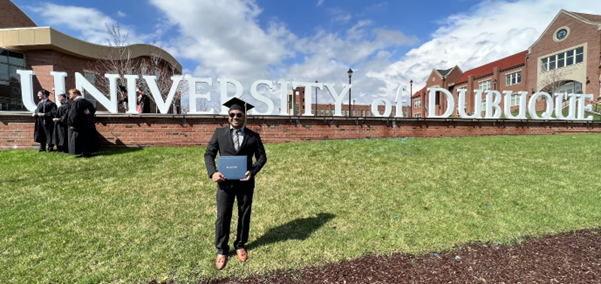Nikhil Patel is a prominent SAP Consultant at Deloitte Consulting LLP, based in Houston, Texas. With SAP certification and a specialized focus on transforming SAP Human Capital Systems through machine learning algorithms, he has established himself as an expert in the field. Beyond his consulting role, Nikhil is recognized as a visionary for his significant contributions to research. He has recently completed Master of Business Administrator from University of Dubuque, Iowa and he also holds Bachelor of Engineering (Computer Engineering) degree from Mumbai University.
Nikhil Patel holds the title of Senior Member of IEEE, U.S. Region 5, and is regularly invited to serve as a technical reviewer for prestigious IEEE Access Journals and conferences, such as ICSCA2022. His expertise in Artificial Intelligence, Machine Learning, and Deep Learning has earned him a reputation as a leading authority in these cutting-edge fields. IEEE Recently featured Nikhil’s article on its official website
3D structures, rather than 2D images, provide more detailed and insightful information when it comes to diagnosing brain tumors. Physicians find it more advantageous to assess brain tumors using 3D reconstructions, as they offer a more accurate representation of the tumor’s size, shape, and location. However, the process of segmenting tumors from CT images and reconstructing their 3D form is both complex and delicate. This is especially true in healthcare, where precision is critical and even small errors can have significant consequences.
A small error in 3D brain tumor segmentation and reconstruction can lead to incorrect diagnoses, which may result in severe health and emotional consequences for patients. Nikhil Patel has developed an innovative 3D brain tumor segmentation technique that promises to be a groundbreaking advancement in biomedical engineering.
This method employs a Nested Deep Neural Network architecture designed to automate the brain tumor diagnosis process. The technology will be integrated with modern CT scanners to aid radiologists in providing more accurate assessments. Given the sensitive nature of brain tumors, having access to detailed, precise information allows physicians to make more informed decisions, leading to more effective treatment plans.
In cases where the tumor is not treatable with medication, surgery becomes necessary for removal. Imagine the benefit to brain surgeons if they could have a 3D-printed model of the tumor before performing the surgery. This would provide surgeons with a highly detailed, tactile understanding of the tumor’s shape and location, significantly improving the precision of the procedure and increasing the likelihood of a successful outcome.
Brain surgery is a high-risk procedure, and complications can arise at any point during the operation. Having a 3D-printed model of the tumor would allow surgeons to assess potential challenges and take necessary precautions before the surgery begins. Inspired by this vision, Nikhil Patel developed a cutting-edge segmentation method, which was published at the 13th IEEE Annual Ubiquitous Computing, Electronics, and Mobile Communication Conference (UEMCON 2022). His system achieves impressive segmentation results, with dice scores of 90.2%, 85.11%, and 85.41% for whole tumors, core tumors, and enhancing tumors, respectively.
Sandeep envisions integrating his segmentation method with modern CT scanners and a 3D printing module to create 3D-printed models of the tumor directly after scanning. Although this concept sounds futuristic, it presents several technical challenges that will require further research and experimentation. Despite these obstacles, Sandeep is confident that he can transform this innovative idea into a practical and realistic solution for improving brain tumor surgery.

